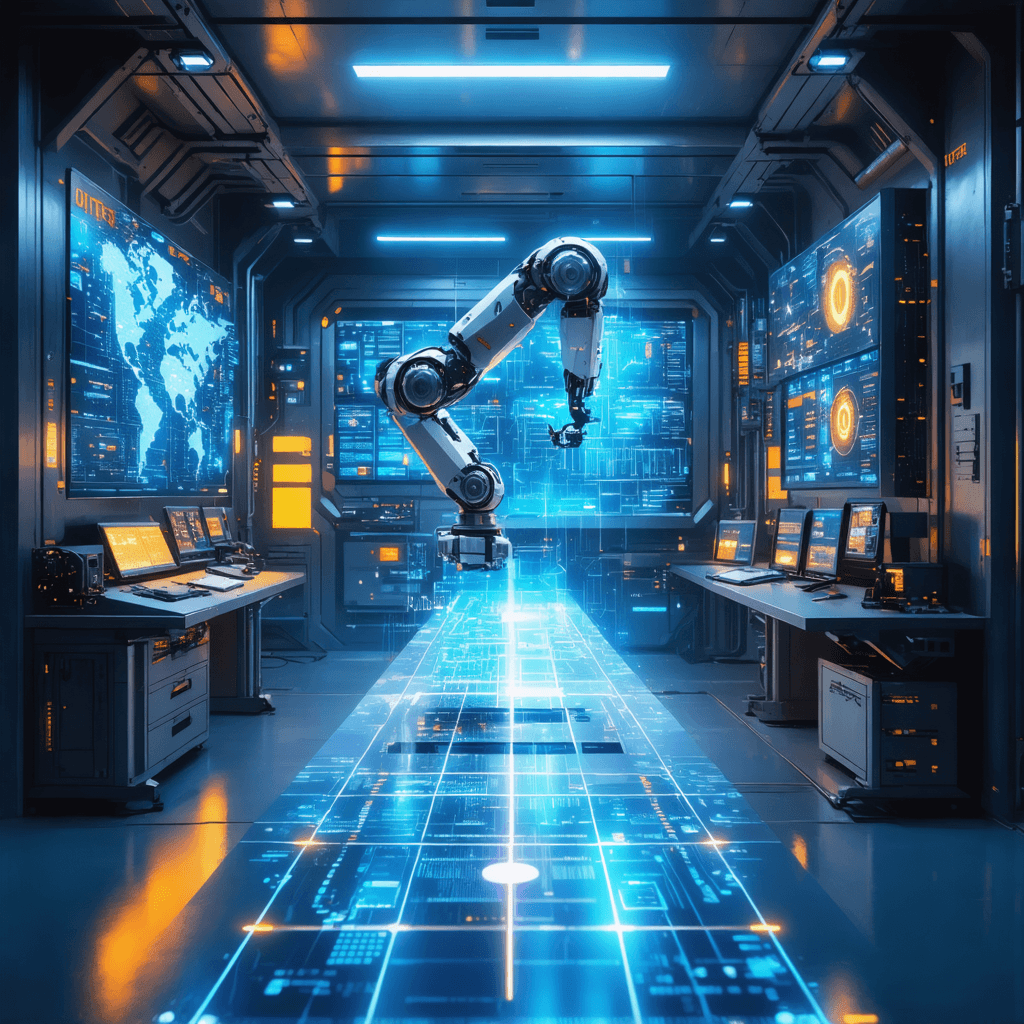AI Meets Reality: Navigating the Tightrope of Smart Automation in Complex Industrial Systems
In today's rapidly evolving industrial landscape, the integration of artificial intelligence (AI) with complex industrial systems represents both a revolutionary opportunity and a significant challenge. As manufacturers and facility operators navigate this technological transformation, understanding the delicate balance between automation and human oversight becomes increasingly crucial.
The Current State of Industrial AI
The industrial sector has witnessed unprecedented growth in AI adoption since 2023. According to recent industry reports, over 67% of manufacturing facilities now incorporate some form of AI-driven automation in their operations. This substantial increase reflects a growing recognition of AI's potential to optimize processes, reduce costs, and enhance safety protocols.
Smart Automation: Beyond the Basics
Modern industrial AI systems go far beyond simple automation. These sophisticated platforms can:
- Predict equipment maintenance needs before failures occur
- Optimize resource allocation in real-time
- Enhance quality control through computer vision
- Manage complex supply chain dynamics
- Monitor and adjust environmental parameters automatically
Challenges in Implementation
Despite the promising capabilities, implementing AI in industrial settings presents several significant challenges:
1. System Complexity
Industrial environments often involve intricate networks of interconnected systems, each with its own operational parameters and safety requirements. Integrating AI into these existing frameworks requires careful consideration of:
- Legacy system compatibility
- Data integration protocols
- Real-time processing capabilities
- Redundancy requirements
2. Data Quality and Management
The effectiveness of AI systems heavily depends on the quality and quantity of available data. Industrial facilities must address:
- Data collection infrastructure
- Sensor reliability and calibration
- Storage and processing capabilities
- Data security protocols
Best Practices for Implementation
1. Phased Integration Approach
Successfully implementing AI in industrial systems requires a methodical, phased approach:
Assessment Phase
- Evaluate current systems and capabilities
- Identify specific areas for AI integration
- Define clear objectives and metrics
Pilot Implementation
- Start with small-scale projects
- Monitor and measure results
- Gather feedback from operators and stakeholders
Scaled Deployment
- Gradually expand successful implementations
- Maintain continuous monitoring and adjustment
- Provide ongoing training and support
2. Human-Centric Design
The most successful AI implementations maintain a strong focus on human operators:
- Intuitive interfaces for system interaction
- Clear communication of AI decisions and recommendations
- Easy override capabilities for human operators
- Comprehensive training programs
Risk Management and Safety Considerations
1. Safety Protocols
Industrial AI systems must incorporate robust safety measures:
- Multiple layers of redundancy
- Fail-safe mechanisms
- Regular safety audits
- Emergency shutdown capabilities
2. Cybersecurity Measures
As industrial systems become more connected, cybersecurity becomes paramount:
- Regular security assessments
- Multi-factor authentication
- Encrypted communications
- Regular software updates and patches
Future Trends and Developments
The industrial AI landscape continues to evolve rapidly. Key trends to watch include:
Edge Computing Integration
- Reduced latency in decision-making
- Enhanced real-time processing capabilities
- Improved system reliability
Advanced Analytics
- Predictive maintenance optimization
- Resource utilization forecasting
- Performance trending and analysis
Autonomous Operations
- Self-optimizing systems
- Adaptive learning capabilities
- Enhanced decision-making algorithms
ROI and Business Impact
Organizations implementing AI in industrial settings have reported significant benefits:
- 15-25% reduction in maintenance costs
- 20-30% improvement in equipment reliability
- 10-15% increase in operational efficiency
- 30-40% reduction in quality-related issues
Practical Implementation Steps
Start with a Clear Strategy
- Define specific objectives
- Identify key performance indicators
- Establish timeline and milestones
Build the Right Team
- Combine domain expertise with AI knowledge
- Ensure proper training and support
- Foster collaboration between IT and OT teams
Establish Monitoring Systems
- Define success metrics
- Implement reporting mechanisms
- Regular review and adjustment protocols
Conclusion
The integration of AI in industrial systems represents a significant opportunity for optimization and improvement. Success requires a balanced approach that combines technological innovation with practical considerations and human expertise. Organizations that carefully navigate this transition while maintaining focus on safety, security, and human factors will be best positioned to realize the full potential of industrial AI.
Ready to Take Your Industrial AI Knowledge to the Next Level?
Explore our comprehensive range of courses and resources at 01TEK. From fundamental concepts to advanced implementation strategies, we offer the tools and expertise you need to succeed in the evolving industrial landscape. Visit our website to discover how we can help you transform your industrial operations through intelligent automation.
Don't miss out on the future of industrial automation. Join the 01TEK community today and stay ahead of the curve.
When everything seems to be going against you, remember that the airplane takes off against the wind, not with it.
Henry Ford, founder of Ford Motor Company



